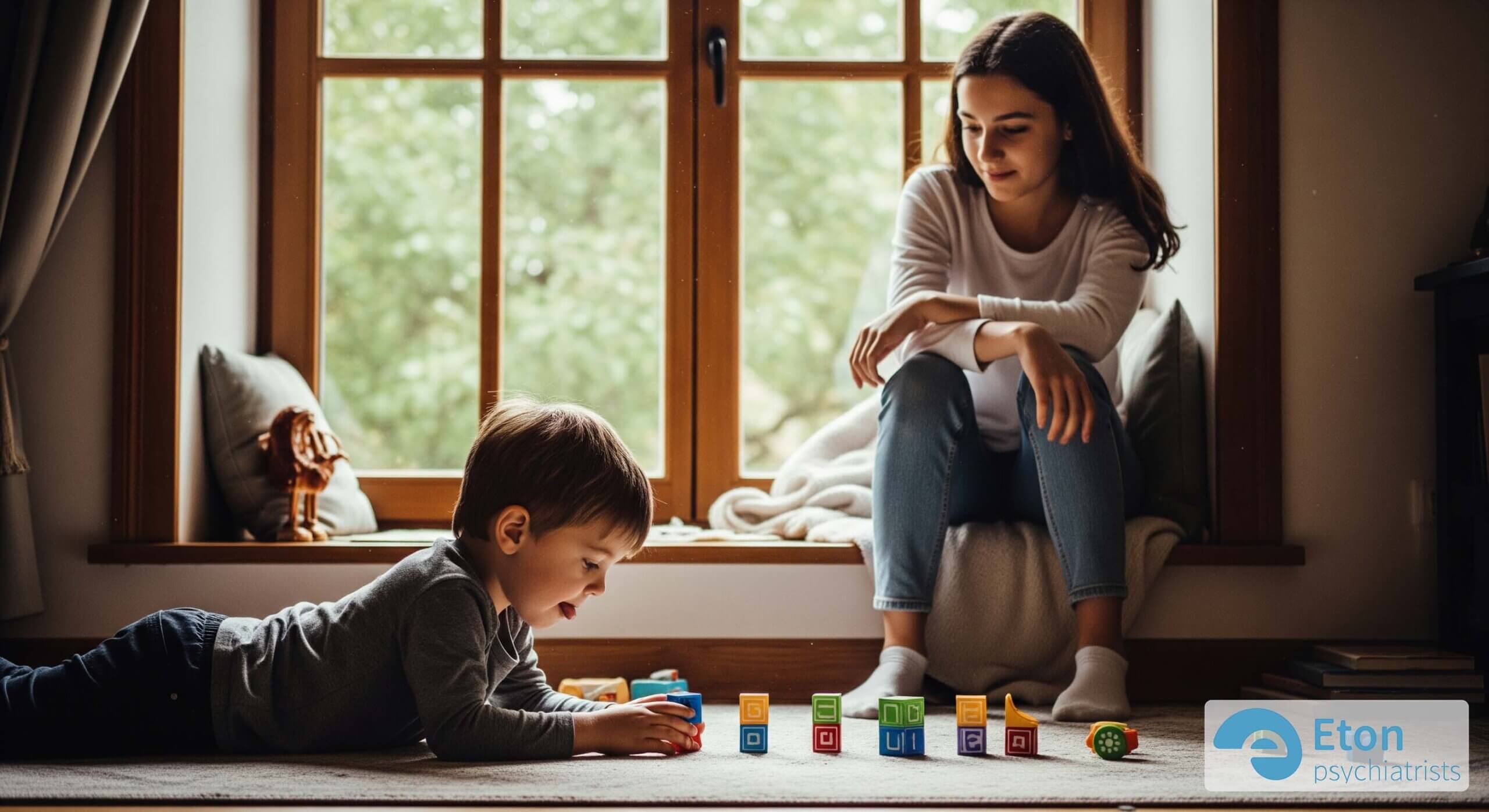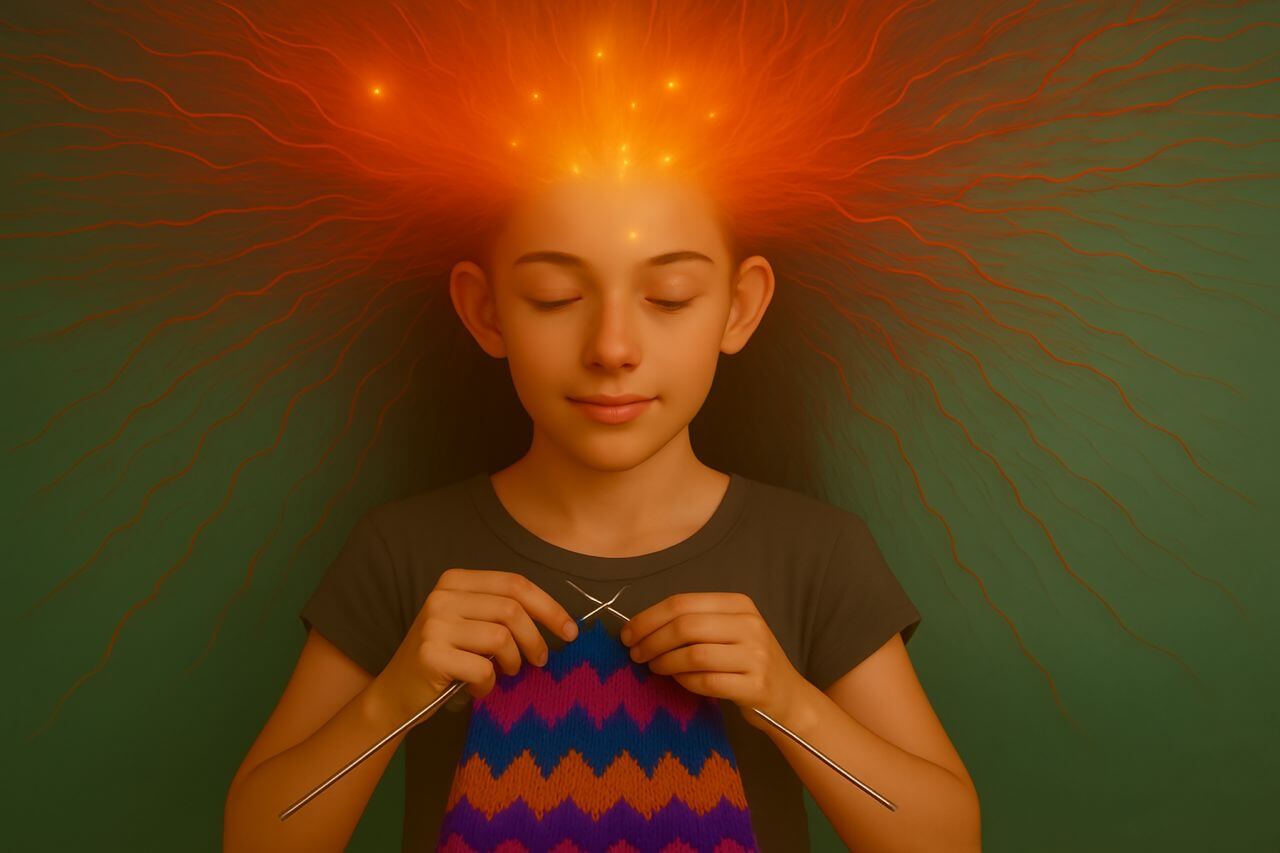Temp
Listen to the Article
For those on the go or who prefer listening, you can play the full audio version of this deep dive below.

The role of siblings in autism therapy is a profoundly important, yet often misunderstood, aspect of family life. From a clinical perspective, it’s not about turning a sibling into a junior therapist. Instead, the focus should be on nurturing the sibling relationship itself, creating a supportive family system where every member (both neurotypical and neurodivergent) can thrive. When we achieve this, the therapeutic benefits for the autistic child and the well-being of their siblings naturally follow. This guide explains how to build that resilient family system.
Shifting the Focus: Beyond ‘Intervention,’ Towards a Resilient Family System
For many years, the conversation around autism and siblings was framed by a deficit model. The goal was often seen as using the neurotypical sibling as a tool for intervention, a model to help the autistic child mask their traits and appear more neurotypical. At Eton Psychiatrists, we advocate for a fundamental shift in this perspective. Our approach is aligned with modern, neurodiversity-affirming care.
This new model reframes the objective entirely. The primary goal is not to change the autistic individual, but to strengthen the entire family unit. We move from asking, “How can a sibling help fix the problem?” to “How can we support the sibling relationship to ensure everyone feels valued, understood, and connected?”
This approach recognises that autistic communication styles, such as stimming or echolalia, are valid forms of expression, not just behaviours to be managed. It sees the family as a complex, interconnected system. When one member faces challenges, the entire system is affected. Therefore, true, lasting therapy involves supporting the mental health and resilience of everyone in that system.
The Two Sides of the Sibling Coin: Understanding the Full Experience
The experience of being a sibling to an autistic person is uniquely dual-sided. It often contains profound gifts alongside significant, unspoken challenges. Acknowledging and validating this complete picture is the first step toward building a healthy family dynamic.

The Gifts: Fostering Empathy, Patience, and a Unique Worldview
Living with an autistic sibling can cultivate remarkable strengths in a neurotypical child, qualities that I see shape them into compassionate and resilient adults.
- Profound Empathy and Compassion: Siblings often develop a sophisticated understanding of non-verbal cues and diverse perspectives, fostering a level of empathy that is rare among their peers.
- Exceptional Patience and Tolerance: Navigating communication differences and managing challenging situations builds a deep well of patience and an acceptance of people’s unique timelines and needs.
- Strong Advocacy Skills: Siblings frequently become fierce, effective advocates for their autistic brother or sister, defending them from misunderstanding and championing their needs at school and in the community.
- A Unique Perspective: They often gain a mature worldview, learning early on that “different” does not mean “less,” and developing a strong sense of justice and fairness.
The Unspoken Challenges: Validating Guilt, Resentment, and Isolation
It is just as crucial to create a safe space for siblings to express the difficult emotions that inevitably arise. These feelings are not a sign of failure; they are a normal human response to a complex and often stressful situation.
- Feelings of Guilt: Siblings may feel guilty for their own achievements, for being neurotypical, or for the negative feelings they sometimes harbour towards their autistic sibling.
- Resentment Over Unequal Attention: They can feel overlooked or resentful when a significant portion of parental time, energy, and resources is directed toward the autistic child’s needs.
- The Burden of Responsibility: Many siblings, even at a young age, feel an immense pressure to be a caretaker, role model, or protector, a role they did not choose.
- Isolation and Embarrassment: They may feel unable to have friends over, be embarrassed by public meltdowns, and feel that no one outside the family can truly understand their life.
The Ripple Effect on Sibling Mental Health
As a psychiatrist, I must emphasise that these challenges are not just emotional hurdles; they can have clinically significant impacts. Research consistently shows that siblings of autistic individuals are at a higher risk of developing mental health conditions themselves. In fact, a major 2021 meta-analysis confirmed they face a higher risk for challenges with their overall mental health, including anxiety and depression.
This is not a reflection on the autistic child, but a result of the chronic stress that can affect the entire family system. The constant worry, the hyper-vigilance, and the complex emotional load can contribute to anxiety and depression.
In the UK, this can sometimes lead to a child taking on the responsibilities of a Young Carer. This is a formal term for a child who provides care for a family member. While born from love, this role carries a significant mental load and can impact a child’s education, social life, and long-term well-being. Recognising this pressure is vital for providing the right support.
The Sibling’s Powerful Role in a Therapeutic Alliance
When siblings are properly supported, their role in their autistic sibling’s development can be powerful and positive. They are not therapists, but their natural, daily interactions create therapeutic opportunities that a clinical setting can’t replicate.
The Sibling’s Role as a Natural Social Model
A therapist might see a child for a few hours a week; a sibling is there every day. They provide a constant, organic model for social interaction. Learning happens naturally during playtime, at the dinner table, and while watching television. The autistic child can observe, imitate, and practice social skills like turn-taking, sharing, and interpreting facial expressions in a safe, low-pressure environment. This is often where skills learned in therapy are generalised to the real world.
Boosting Social and Adaptive Skills: What the Evidence Shows
This is not just a heartwarming idea; it is backed by solid scientific evidence. Sibling-mediated interventions have been shown to be highly effective. A key 2015 systematic review by Shivers & Plavnick confirmed the positive impact of these approaches. Furthermore, a comprehensive meta-analysis concluded that involving siblings has a “medium effect size” for improving an autistic child’s social and communication skills. These interactions can enhance everything from understanding others’ perspectives to adaptive daily living skills.
Practical, Evidence-Based Strategies for Parents and Carers
Supporting the sibling relationship is an active, ongoing process. Here are five evidence-based strategies parents can use to build bridges, not burdens, and foster a healthy environment for all their children.

- Foster Open, Age-Appropriate Communication About Autism. Knowledge dispels fear and resentment. Explain autism to the neurotypical sibling in a way they can understand. Use clear, positive language. For a young child, it might be, “Your brother’s brain works a little differently, so he needs quiet time to feel calm.” For a teenager, you can discuss neurodiversity and the specific challenges their sibling faces.
- Carve Out Protected One-on-One Time for Each Child. This is perhaps the most critical strategy. Schedule regular, protected time where your attention is focused solely on the neurotypical sibling. It doesn’t have to be extravagant—it could be a weekly walk, a board game, or a trip for hot chocolate. This action loudly communicates: “You are just as important. I see you.”
- Teach Positive Engagement, Not Just “Management”. Shift the instruction from “managing” your sibling’s behaviour to finding shared points of connection. Help them discover activities they can genuinely enjoy together, whether it’s building with LEGO, playing a specific video game, or listening to music. The goal is a reciprocal, joyful relationship, not a one-way street of caregiving.
- Establish Fairness Over Equality in Household Rules. Trying to treat both children “equally” is often impossible and can breed resentment. Instead, aim for “fairness.” Explain that fairness means everyone gets what they need to succeed. An autistic child might need different expectations around chores or social outings, and explaining the “why” behind these differences can help a sibling understand and accept them.
- Champion the Sibling’s Own Identity and Friendships. Actively encourage and support the neurotypical sibling’s personal interests, hobbies, and friendships outside the family. Their life should not revolve entirely around their autistic sibling. Giving them the space and permission to build their own identity is essential for their self-esteem and long-term mental health.
Supporting the Sibling Relationship into Adulthood
The sibling relationship is one of the longest-lasting in a person’s life, and the dynamic evolves significantly over time. It is a major gap in current resources that little attention is paid to adult siblings.

As parents age, the responsibility for support often transitions to the neurotypical sibling. This can bring up complex feelings and practical challenges, from financial planning to navigating adult care services. It is crucial for families to have open conversations about these future plans long before they become urgent. Fostering a healthy, communicative relationship during childhood lays the foundation for a resilient partnership that can navigate these challenges in adulthood.
When to Seek Professional Help: The Role of Family Systems Therapy
While these strategies are powerful, some families benefit from professional guidance. Family Systems Therapy, or simply family therapy, can be incredibly effective. It provides a neutral, professionally guided space where every family member has a voice.
A therapist can help families untangle complex communication knots, develop healthy coping mechanisms, and manage the stress that affects the entire unit. Seeking this help is not a sign of weakness; it is a proactive step toward building a stronger, healthier family. It reinforces that the well-being of the family is a shared responsibility, not a burden for one child to carry.
Why Trust Eton Psychiatrists?
Eton Psychiatrists is a consultant-led practice specialising in the diagnosis and treatment of ADHD and Autism Spectrum Disorder. Our approach is rooted in evidence-based medicine and a deep, empathetic understanding of the challenges faced by individuals and their families. We see the family as an interconnected system and believe that supporting every member is the only path to true, sustainable well-being. Our guidance is not just theoretical; it comes from years of clinical experience helping families navigate these complex dynamics with compassion and expertise.
Conclusion: The Sibling Bond as a Pillar of Lifelong Well-being
The bond between siblings, when one is autistic, is a defining force in a family’s emotional landscape. It is a source of unique strengths and undeniable challenges. Shifting our perspective away from intervention and towards connection by supporting the neurotypical sibling as an individual, fosters a bond of mutual respect. We do more than just aid in therapy. We build a foundational pillar of support, resilience, and love that will sustain the entire family for a lifetime.
Summary (TLDR)
- A New Perspective: The focus should not be on using a sibling as a therapeutic tool. It should be on strengthening the entire family system so that every member, neurodivergent or neurotypical, feels supported and can thrive.
- The Sibling Experience: Being a sibling to an autistic person is a dual experience. It can foster incredible gifts like empathy and patience, but it also comes with unspoken challenges like guilt, resentment, and isolation that must be validated.
- Sibling Mental Health: The chronic stress within the family system means siblings of autistic individuals are at a higher clinical risk for anxiety and depression. In the UK, they may also take on the role of a “Young Carer,” which has its own mental load.
- The Power of the Sibling Bond: Siblings are powerful, natural models for social skills. Evidence shows that positive sibling involvement can lead to measurable improvements in an autistic child’s communication and adaptive skills.
- The Parental Role: Parents can actively support this bond by facilitating open communication about autism, carving out protected one-on-one time for the neurotypical sibling, and teaching fairness over equality.
- Value of Professional Support: When challenges feel overwhelming, Family Systems Therapy provides a neutral space for every member to be heard, helping the entire family develop healthy coping strategies together.
Frequently Asked Questions
Q1: How do siblings affect autistic people?
Siblings have a profound, positive effect. They act as natural social models, helping their autistic sibling develop social, communication, and play skills in a real-world environment. A supportive sibling bond is strongly linked to better long-term outcomes and overall well-being.
Q2: What are the responsibilities of a sibling of an autistic person?
A child’s only responsibility is to be a child. While they may naturally help, they should not be expected to be a caregiver or therapist. The responsibility for care and support lies with the parents and professional support systems.
Q3: How can I support my child who has a sibling with autism?
Prioritise one-on-one time with them, maintain open communication about autism, validate their complex feelings (both positive and negative), and fiercely protect their own hobbies, friendships, and identity.
Q4: What is sibling therapy for autism?
Sibling therapy is not about “treating” the sibling. It typically involves structured sessions, often within the context of family therapy, that aim to improve communication, foster understanding, and strengthen the bond between siblings. It gives both children tools to engage with each other positively.


